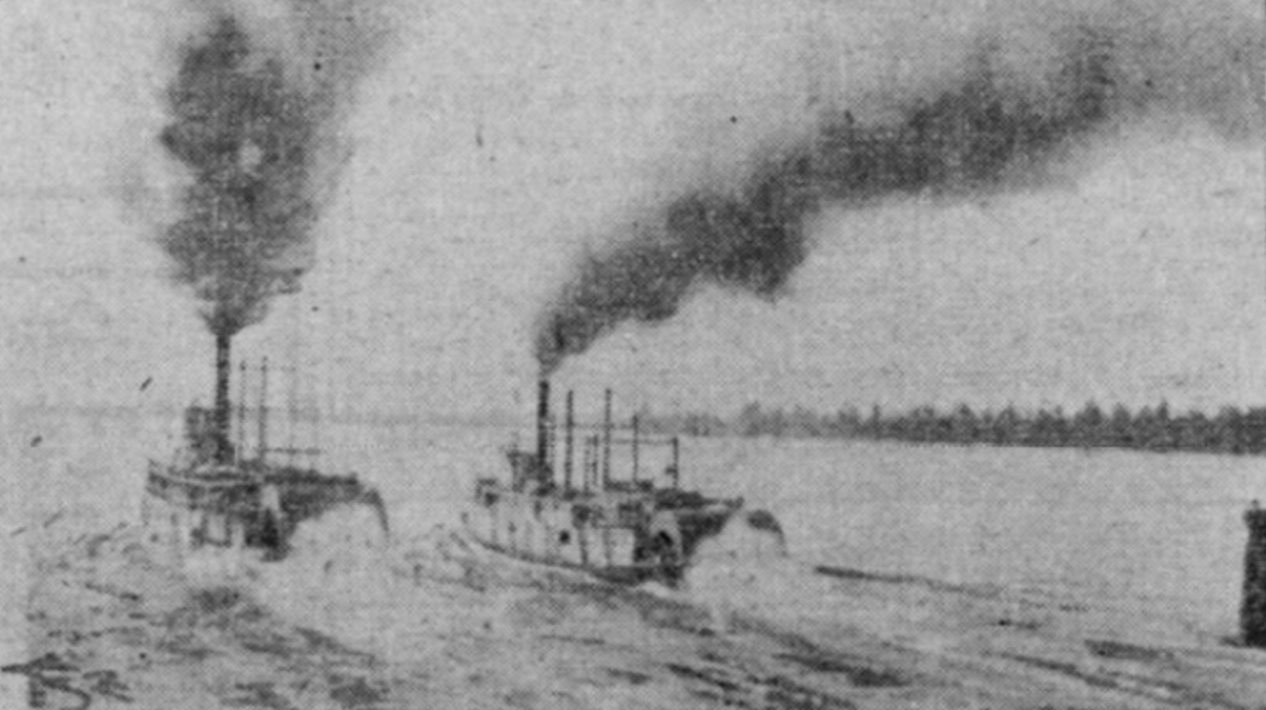Today in 1811, a steamboat called the Hope squared off against a steamboat called The North River in a race on the Hudson River, in the first known steamboat race.
Yes, a couple centuries ago, racing steamboats was a thing.
It is worth noting that this race that was supposed to run from Albany to New York City ended not with a steamboat triumphantly crossing the finish line but with the two participants colliding at high speed.
Or at least the 1811 version of high speed, which was five miles per hour.
Maybe it’s not surprising that even that crash-induced draw did not slow the interest in steamboat racing.
An article from the Howard Steamboat Museum explains why.
Steam power was a big, big deal in the early 19th century.
Rivers were how a lot of goods got from place to place, and steamships could get those goods from point A to point B faster than ever before.
Steamboat owners advertised their ships as the fastest, and since they couldn’t all be The Fastest, people started to wonder which ones would win if they held a race.
So the race between the Hope and The North River just got people interested in more races, faster races, and bigger races.
P.T. Barnum was in at least one steamboat race, and business magnate Cornelius Vanderbilt once bet that a ship named for him could outrun another steamship called the Oregon. (He lost.)
Steamboat racing had plenty of fans, and there were plenty of bets placed on the outcomes of the races.
But the sport also had plenty of victims.
Overheated boilers caught fire or exploded and if you were in the way of that, well, sorry to see you go.
A series of tragedies led for new laws and regulations to keep ships, crews and race-watchers safe.
But it wasn’t boiler explosions that did steamboat racing in.
It was largely the rise of railroads, which took the top spot in moving goods in the second half of the 19th Century.
But for those who miss the old days when steamship captains might spot each other and issue a challenge for a race, you can always head to Louisville, Kentucky.
Each year it’s home to the Great Steamboat Race, two old-school ships trying to outrun each other on the Ohio River.
This month in 1377, a Buddhist monk in Korea published a book now known as “Jikji.”
While much of the original edition is believed lost, it’s still the oldest surviving book printed with movable metal type – 78 years before the Gutenberg Bible.
Was there also binge-reading back then?
For Profit and Glory: Steamboat Racing on the Inland Rivers (Howard Steamboat Museum)
Jikji: An Invaluable Text of Buddhism (Korea Times)
Photo by Sunday Oregonian via Wikicommons

